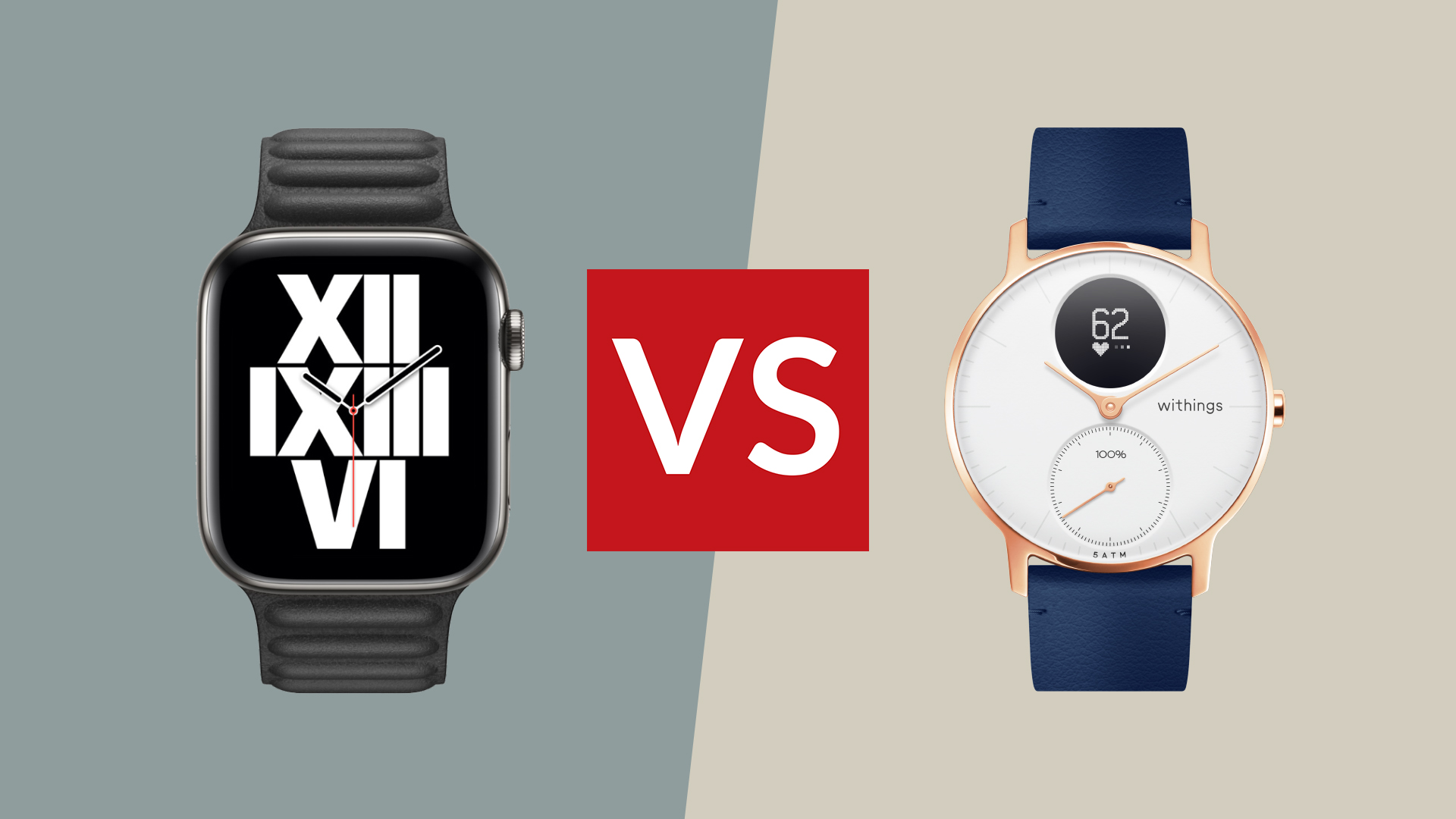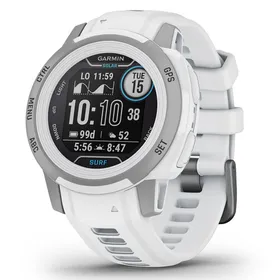Hybrid watch vs smartwatch: which is better?
Helping you choose between the two types of intelligent timepiece, which is better a hybrid watch or smartwatch?


When it comes to smartwatches there are two main categories to pick from. The first is the conventional smartwatch, like the Apple Watch or Samsung Galaxy Watch. These have a touchscreen display, WI-Fi, optional 4G, and are packed full of apps, as well as health and fitness features.
The other product category is the hybrid watch. These more closely resemble a traditional watch, with their physical dials instead of a touchscreen display. Some have a simple black-and-white display, while others have a second hand to show information like your daily steps. Popular hybrid watch brands include Withings, Fossil and Skagen.
If you're looking for product recommendations, you can check out our guides to the best smartwatches and best hybrid watches around, but we suggest you read this information first so you can decide which one is right for you.
Hybrid watch vs smartwatch: Hardware and design
There is no mistaking a smartwatch for a regular watch. They have touchscreen displays instead of a traditional dial, and almost all models now feature a heart rate tracker on the back of the case. Iterating with these is usually done by tapping and swiping at the screen, and by pressing a couple of buttons on the side of the case.
The Apple Watch features a single button and the Digital Crown, which rotates to scroll through content on the watch’s user interface. Samsung has experimented with different bezels over the years, some physically rotating and others being touch-sensitive to help you navigate the watch’s operating system.
Some smartwatches can be fitted to regular watch straps using industry-standard lug bars. This makes it easy to remove the original strap and fit any other one you like. The Apple Watch uses a unique design for attaching to straps, but thankfully Apple and a huge range of third parties make replacement straps of all designs and prices, so it’s easy to create a look that matches your personal style.
On the other hand – or wrist – we have the hybrid watch. These often look like regular watches, tend to be smaller than smartwatches, and in most cases have industry-standard lug bars for swapping out the strap.
Get all the latest news, reviews, deals and buying guides on gorgeous tech, home and active products from the T3 experts

Simpler and cheaper hybrid watches have no display at all, and instead, relay information using a second hand within the main dial. In the case of Withings hybrid watches, this hand sweeps from zero to 100-percent as you work towards your daily step goal, counted using the watch’s accelerometer.
Some hybrid watches also use their hour and minute hands to momentarily point at icons arranged around the outside of the main dial, showing you information about notifications like calls and messages coming through to your Bluetooth-connected smartphone.
More sophisticated hybrid watches have a small display for showing information like your heart rate and notifications. Hybrid from Skagen takes things a step further by using a large black-and-white display that takes up much of the dial and contains three complications for showing information like steps, your heart rate and the local weather forecast.
For a more traditional design – and for those who want a subtler, smaller timepiece – the hybrid watch is the winner here. But if you want a bright, colourful display for showing a huge amount of information at once, a smartwatch is the way to go.
Lastly on design, if you have a much larger budget for a connected wearable then some Swiss watchmakers like Mondaine and Frederique Constant make luxury hybrids, complete with the quality and price to match. Tag Heuer and Montblanc both sell luxury Swiss smartwatches, too.
Hybrid watch vs smartwatch: Software and apps
Like your smartphone, smartwatches have their own operating system that runs applications. Apple uses its own watchOS, while Samsung has Tizen and Google, although not a maker of smartwatches itself, has Wear OS, which is used by many other smartwatch makers.
These operations systems all work in a fairly similar way, giving the wearer access to apps and application stores, as well as health and fitness features, stopwatches and timers, calendars, voice assistants and smart home controls. These watches can also handle messages, emails and phone calls, either via your Bluetooth-connected smartphone, Wi-Fi, or their own 4G cellular connection.
Thanks to their processing power, smartwatches really can be described as miniature computers for your wrist. By comparison, hybrid watches tend to keep things much simpler.

Due to their more basic displays, they have simpler software designed to cover the basics. There is timekeeping, of course, and many hybrid watches use their heart rate monitor and other sensors to track exercise. There is no app store, no phone calls and no social media; but that’s the point of a hybrid watch, and the result of this simplified approach is great battery life.
Whereas most smartwatches last just a day or two before needing a trip to the charger – Apple quotes just 18 hours for its latest Watch Series 6 – hybrid watches can last for weeks or even months between charges, even when tracking your exercise and sleep every day.
The winner here depends on what you want from your watch. If you want to communicate with it, or control your smart home and view your calendars, you’ll need a smartwatch. But if you don’t need those features on your wrist, and instead want a watch to keep track of your daily steps, automatically change when you travel between time zones, and provide sleep reports each morning, a hybrid will do the job.
Hybrid watch vs smartwatch: Health and fitness
A key feature of both smartwatches and hybrid watches is health and fitness tracking. Generally speaking, smartwatches have more health and fitness tracking features than hybrids. However, some hybrids like the Withings ScanWatch are packed full of sensors and algorithms for tracking your heart, respiratory, workouts and sleep. The ScanWatch can even perform an ECG, just like the Apple Watch.
Some of the simplest (and cheapest) hybrid watches miss out on a heart rate tracker. For example, the entry-level Withings Move, which is priced at £50, only tracks walking, running, swimming and sleeping.
By comparison, fully-fledged smartwatches from Apple and Samsung can track more types of exercise, plus your cardio fitness, walking or running pace, and even count individual reps and sets for weight lifting, and accurately measure the distance and elevation change of outdoor runs using GPS and an integrated altimeter.

Which is best?
Picking between a smartwatch and a hybrid comes down to a couple of key factors. Firstly there is your budget, as hybrid watches are cheaper than smartwatches due to their limited feature set and general lack of a touchscreen display and powerful processor. Then there is the design and whether you want a wearable that looks traditional or not.
Many hybrids look like regular watches to the untrained eye, while smartwatches tend to draw attention to themselves with their large cases and illuminated displays. Lastly, you must ask yourself what you want from the wearable. Do you want a device for communicating, receiving messages and making phone calls? Or are you happy with a wearable that tracks your daily steps, sleep and gym sessions? Only a smartwatch can do the former, whereas both device categories can take care of the latter.
Liked this?
- Best Apple Watch: which model should you buy?
- Apple Watch Series 6 review
- Best smartwatch: top wearables reviewed and rated
- Best smartwatch for kids: smartwatches and fitness trackers for tiny wrists
Alistair is a freelance automotive and technology journalist. He has bylines on esteemed sites such as the BBC, Forbes, TechRadar, and of best of all, T3, where he covers topics ranging from classic cars and men's lifestyle, to smart home technology, phones, electric cars, autonomy, Swiss watches, and much more besides. He is an experienced journalist, writing news, features, interviews and product reviews. If that didn't make him busy enough, he is also the co-host of the AutoChat podcast.












